This post may contain affiliate links. Read our disclosure policy.
One of the first things we learned in my baking class in culinary school was how to temper chocolate.
I was SO excited to learn how to do this because for some reason it always really intimidated me and I never tried to learn it on my own.
I have no idea why I was so intimidated because as I learned in school, it’s actually SUPER easy.

Free Ingredient Measuring Guide!
The key to consistent baking success is a click away. Sign up to get instant access to my printable Ingredient Measuring Guide now!
Really all it takes is a little precision and patience – and if you watch the video I made for you and follow the instructions, you will be on your way to tempering beautiful, shiny, hard chocolate in no time!
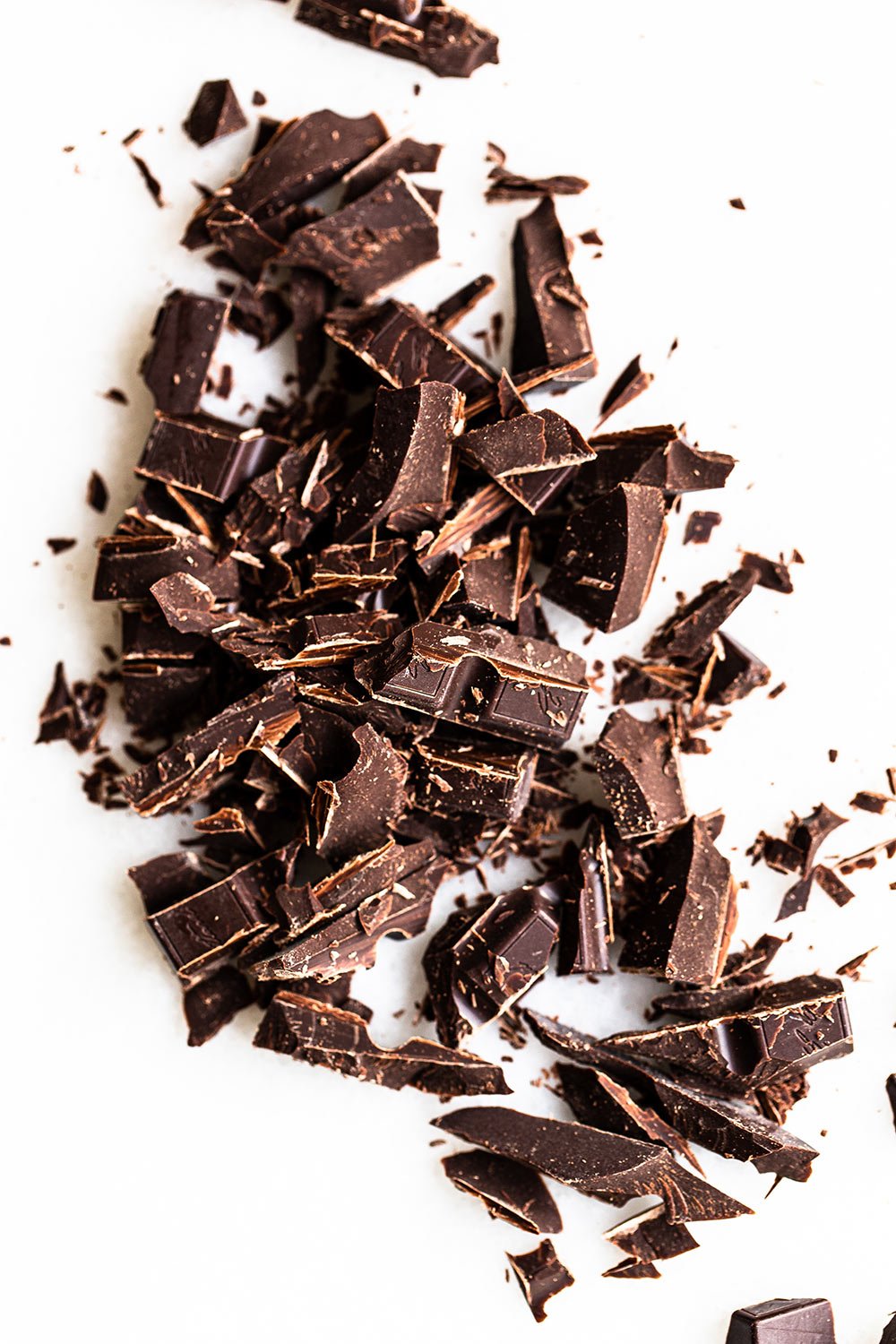
Tempered chocolate is wonderful to use when making homemade candy, such as truffles or peanut butter cups, or peppermint bark, because it maintains a nice smooth, shiny, and hard texture even at room temperature.
It gives your candy a professional quality and makes it much easier to serve and transport – not to mention it just tastes better because you get that wonderful snappy texture. Stay tuned for some recipes utilizing tempered chocolate.
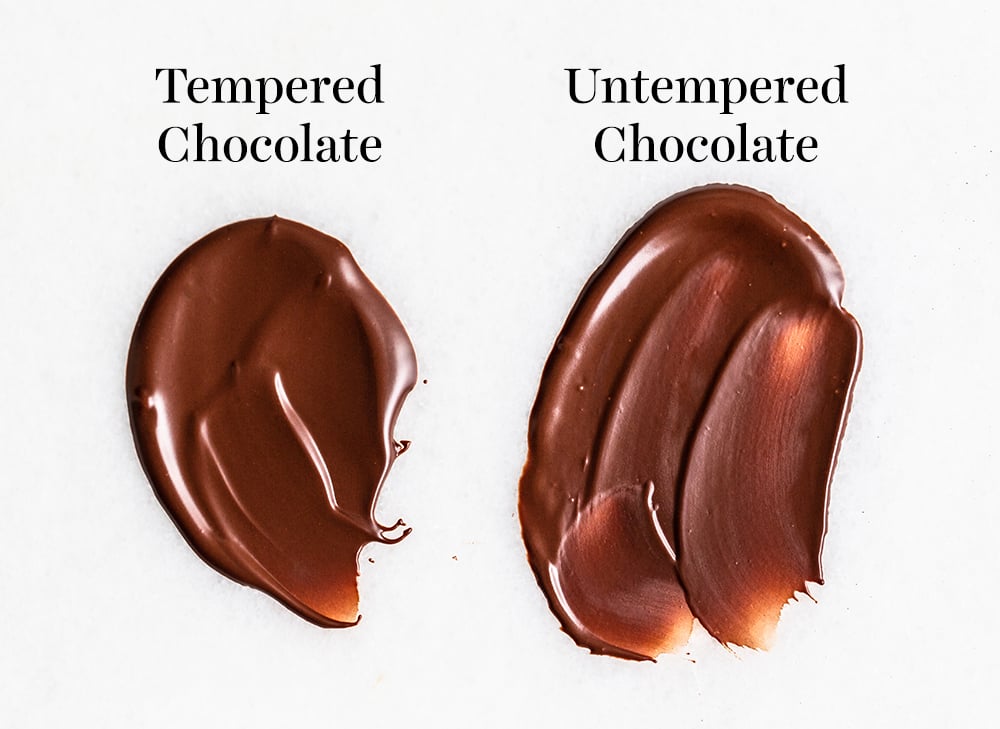

Sprinkle of Science
How to Temper Chocolate
Two Rules for Melting Chocolate
These apply to both melting and tempering chocolate.
1. Never heat above 120°F for bittersweet or semisweet chocolate. If tempering milk or white chocolate, avoid heating above 110°F.
This will sacrifice chocolate flavor.
2. Never expose melted chocolate to water
- Any water will cause the chocolate to seize. Even a droplet from steam!
- You know your chocolate has seized when it becomes lumpy instead of smooth.
- If your recipe calls for liquid, such as butter, water, coffee, or liqueur, always melt it alongside the chocolate simultaneously.
What Does it Mean to Temper Chocolate?
- The process of tempering creates chocolate coatings that are ultra smooth, glossy, and have a crisp satisfying snap when eaten.
- Tempering allows us to manipulate the fat molecules in the cocoa butter of the chocolate to arrange its crystalline structure in a way that creates that snappy chocolate texture.
- This same process, along with proper storage, also helps to prevent the chocolate from blooming, which is when a white coating forms on the surface of the chocolate.
- When using tempered chocolate to coat, say, Oreo cookies, the coated cookies won’t require refrigeration to stay hard and snappy.
When Do I Need to Use Tempered Chocolate?
- Tempering chocolate is perfect for making chocolate candies, truffles, dipped confections, or chocolate cake decorations.
- If you just use melted chocolate to dip, you won’t get a coating that stays snappy. It’ll be dull and soft and will need to be refrigerated just to avoid melting.
- Tempered chocolate products stay hard at cool room temperature. Avoid storing at warm temperatures and at high humidity to protect the tempered chocolate’s structure.
When is Tempered Chocolate Not Needed?
You don’t need to temper if you’re simply adding melted chocolate into a batter, mousse, or ganache.
How Does Tempering Chocolate Work?
- The process involves controlling the melting, cooling, and reheating of chocolate within specified temperature ranges depending on the kind of chocolate.
- The goal of tempering chocolate is to ensure the development and longevity of Form V crystals, one of the six types of cocoa butter crystals.
- This type of fat crystal is stable and contributes to the coveted textural properties of a delicious chocolate treat!
- Maintaining and controlling the development of Form V crystals is also crucial to avoid the unpleasant white, chalky appearance that can form on chocolate when recrystallization occurs.
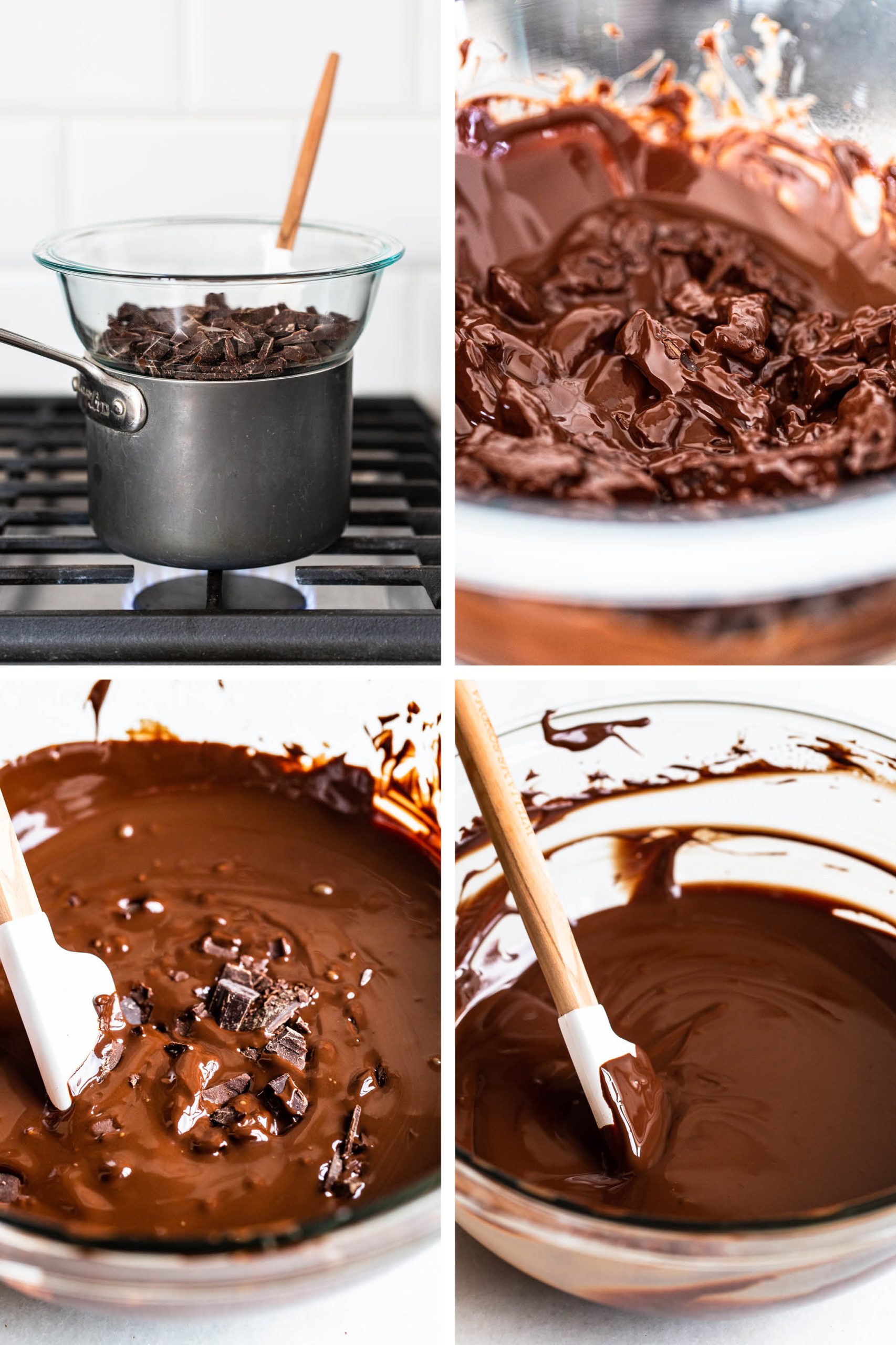
Why Temper Chocolate?
Simply put, it’s the best way to get that beautiful professional chocolate coating (without any additional ingredients or refrigeration) while maintaining a delightful chocolate flavor.
Can’t I Just Use Candy Melts Instead?
‘Chocolate’ candy melt products available at many stores produce a similar crunchy coating when dipped. However, most chocolate compound products aren’t actual chocolate because the cocoa butter has been replaced by hydrogenated industrial oils. They taste artificial and don’t provide the same satisfaction.
What is the Best Chocolate for Tempering? Can you Temper Chocolate Chips?
- Only use high-quality bars of chocolate for baking (such as Ghirardelli baking bars or even Trader Joe’s Pound Plus chocolate) or couverture chocolate wafers (such as Guittard or Valrhona).
- If using bars, finely chop the chocolate with a serrated knife.
- Finely chopped chocolate will melt more evenly.
- DO NOT use chocolate chips. These have added ingredients that help them to maintain their chip shape when exposed to heat and will not melt down smoothly for tempering.
- Learn more about different types and uses for Chocolate in Baking here.
Can you Temper Chocolate Without a Thermometer?
- In my opinion, a thermometer truly is essential to tempering chocolate because it takes the guesswork out and ensures your temper will set up beautifully.
- Chocolate is expensive so I like to make sure I have the proper tools for success!
- You can use a chocolate thermometer to register the temperature stages of tempering chocolate, or simply a high-quality digital thermometer.
What is a Double Boiler?
- A double boiler is simply a heatproof bowl set over a saucepan filled with about an inch of simmering water.
- You just want to make sure the bowl on top doesn’t touch the water.
- This allows the chocolate to be melted gently by the heat.
- You can use metal or glass bowls for the top part of the double boiler.
- Glass will take longer to cool down as required to temper in Step 2.
How to Save Seized Chocolate
The way to fix seized chocolate is completely counterintuitive. It’s done by actually adding a little bit of melted butter, oil, or water back into the mixture and stirring vigorously. Unfortunately, at this point, the fixed melted chocolate should only be used for chocolate sauce or hot chocolate and not for tempering.
Fun Uses for Tempered Chocolate:
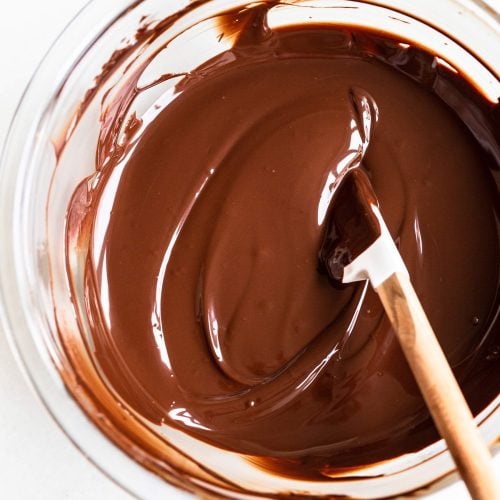
How to Temper Chocolate
Email This Recipe
Enter your email, and we’ll send it to your inbox.
Ingredients
- 16 ounces (454 grams) baking chocolate, finely chopped
Instructions
Tempering Chocolate by Seeding:
Tempering Chocolate by Seeding:
- In a double boiler, melt 2/3 of the chocolate, stirring often, until the thermometer registers around 115°F, but absolutely no higher than 120°F. If tempering milk or white chocolate, heat to 110°F. Remove from the double boiler. Make sure all equipment that comes in contact with the chocolate remains completely dry. Any water will cause the chocolate to seize.
- Gradually seed in the remaining chocolate to bring the temperature down, stirring vigorously and constantly. Stir until the temperature drops to 84°F. This can take some time, usually about 15 minutes, so just be patient – it will come down to temperature! A glass bowl will take longer to cool. Speed this process up by carefully placing the bowl of chocolate into an ice bath, making sure not to get ANY water in the chocolate.
- Reheat the chocolate briefly by placing the bowl back over the double boiler for 5 to 10 seconds at a time, stirring, until it reaches 89°F. This is the “working temperature.” Do not leave the chocolate over the water or let it exceed 91°F.
- You’re done! Test your temper by dipping a small piece of parchment into your chocolate. Let it sit at room temperature for a few minutes. The chocolate should be smooth and firm. If it’s streaky or runny, try stirring in more chocolate to the mixture to bring the temperature down further.
- Tempered chocolate can be tempered over and over again. You want to keep the working temperature of about 89°F when working with it. If it goes far below that temperature, set it back over the double boiler until it is 89°F again. If it goes much above that temperature, add more seed chocolate to drop the temperature.
Tempering Chocolate by Microwave:
Tempering Chocolate by Microwave:
- Put 2/3 of the chocolate in a microwave-safe bowl. Melt at 50% power in 1-minute intervals, stirring between each interval, until melted and smooth. The chocolate should only be between 100 – 110°F.
- Add remaining chocolate in small amounts while stirring. Be sure that the pieces are completely melted before adding more.
- The chocolate will thicken and become cool, shiny, and smooth as you continue stirring and “seeding” it by adding additional small amounts. When it has reached the range 84-91°F, the chocolate will be tempered and ready to work with.
Recipe Notes
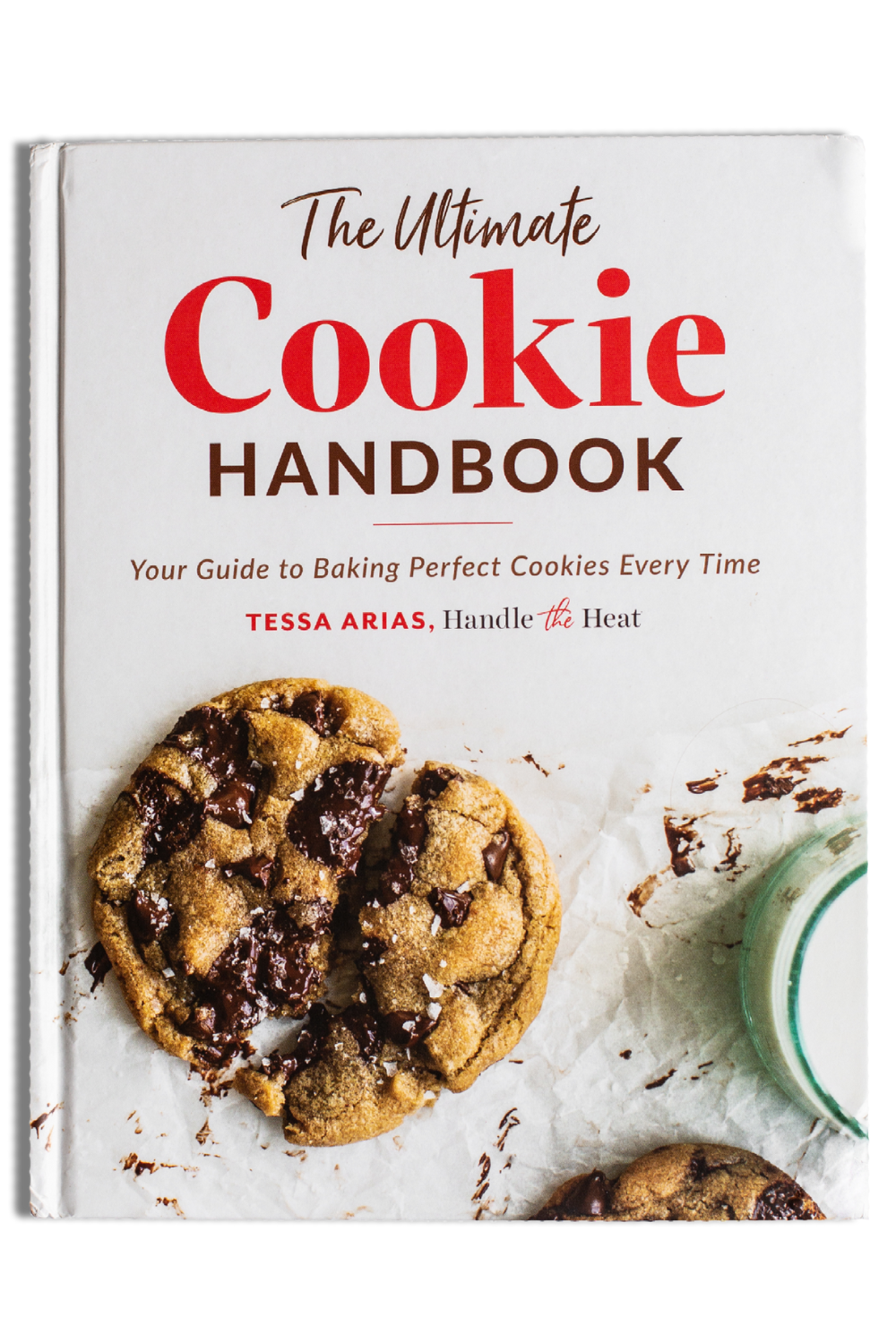
The Ultimate Cookie Handbook
Learn the sweet SCIENCE of cookie baking in a fun, visual way to customize your own recipes frustration-free. Plus, my best 50+ homemade cookies!
This post was originally published in 2013 and updated with more tips and new photos in 2020 and 2023. Photos by Ashley McLaughlin.
Article Credits:
- Written by Tessa Arias
- Edited by Jessie Bruce, Master’s of Public Health Nutrition and Dietetics Candidate at UC Berkeley
Sources:
- Industrial Chocolate Manufacture And Use (2009). In Beckett S. T. (Ed.), (Fourth ed.). United Kingdom: Blackwell Publishing Ltd.
- Amendola, J. (2002). Understanding Baking: The Art and Science of Baking (3rd Edition). Wiley
- Global Education US. VitalSource
- Brenner, M., Sorensen, P., & Weitz, D. (2020). Science and Cooking: Physics Meets Food, From Homemade To Haute Cuisine (First ed.). New York, NY: W. W. Norton & Company, Inc.
- Lonchampt, P., & Hartel, R. W. (2006). Surface bloom on improperly tempered chocolate. European Journal of Lipid Science and Technology, 108(2), 159-168.
doi: Wiley - McWilliams, M. (2016). Foods (8th Edition). Pearson Education (US). VitalSource
- Reaver, A. (2021, Nov. 10). Lipids II – classification, function [Course Lecture]. Introduction and Application of Food Science, University of California, Berkeley, Berkeley, CA, United States.
- Culinary Institute of America. (2022). Tempering Chocolate for Homemade Candy. Retrieved March 20, 2022, from CIA Foodies
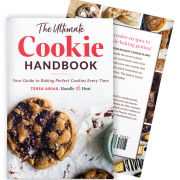
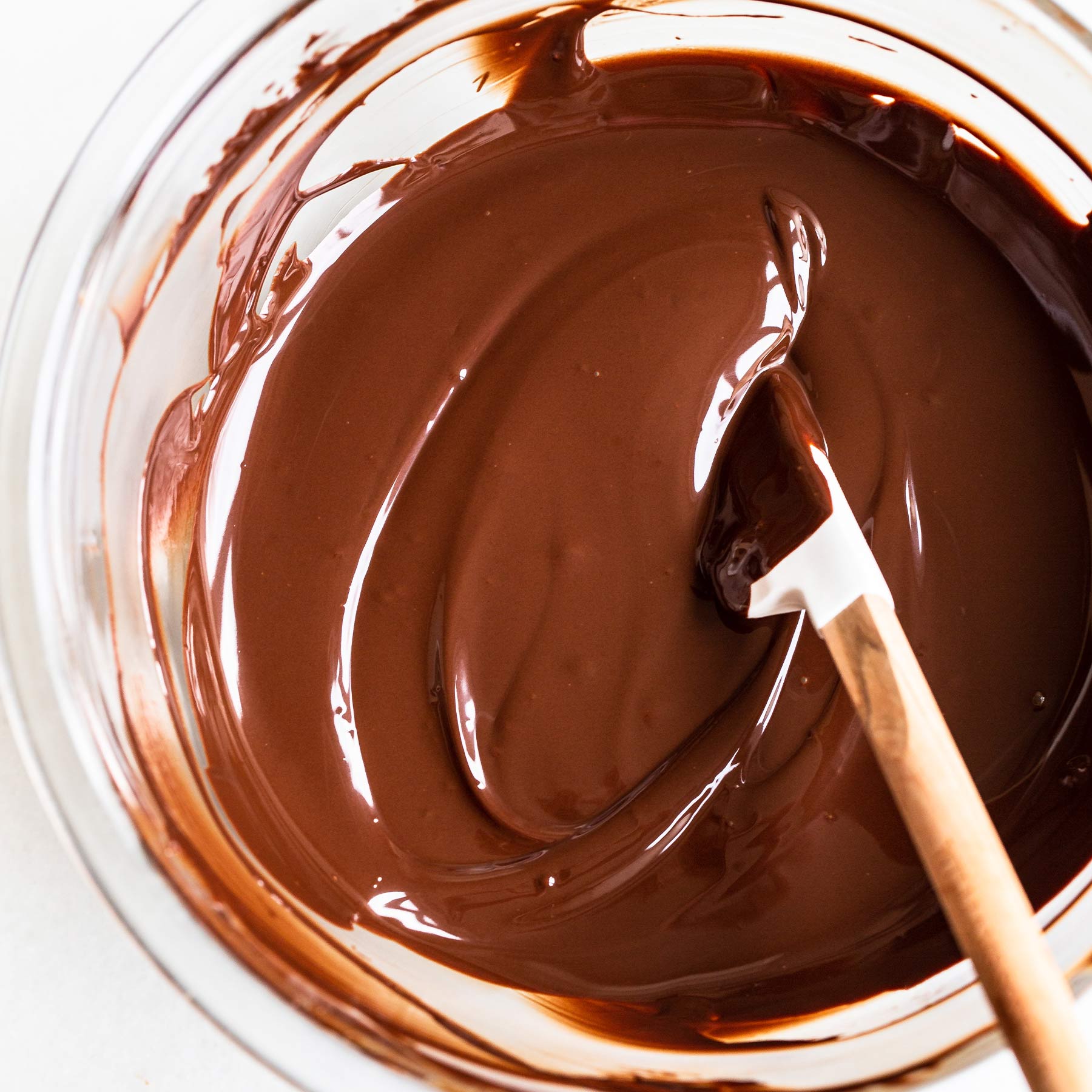

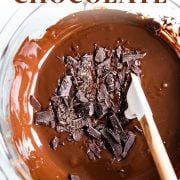
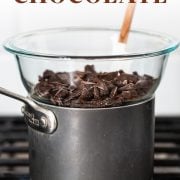
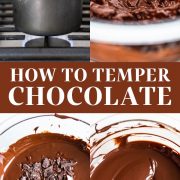
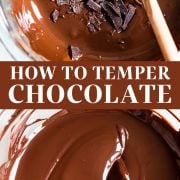
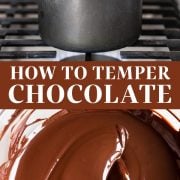
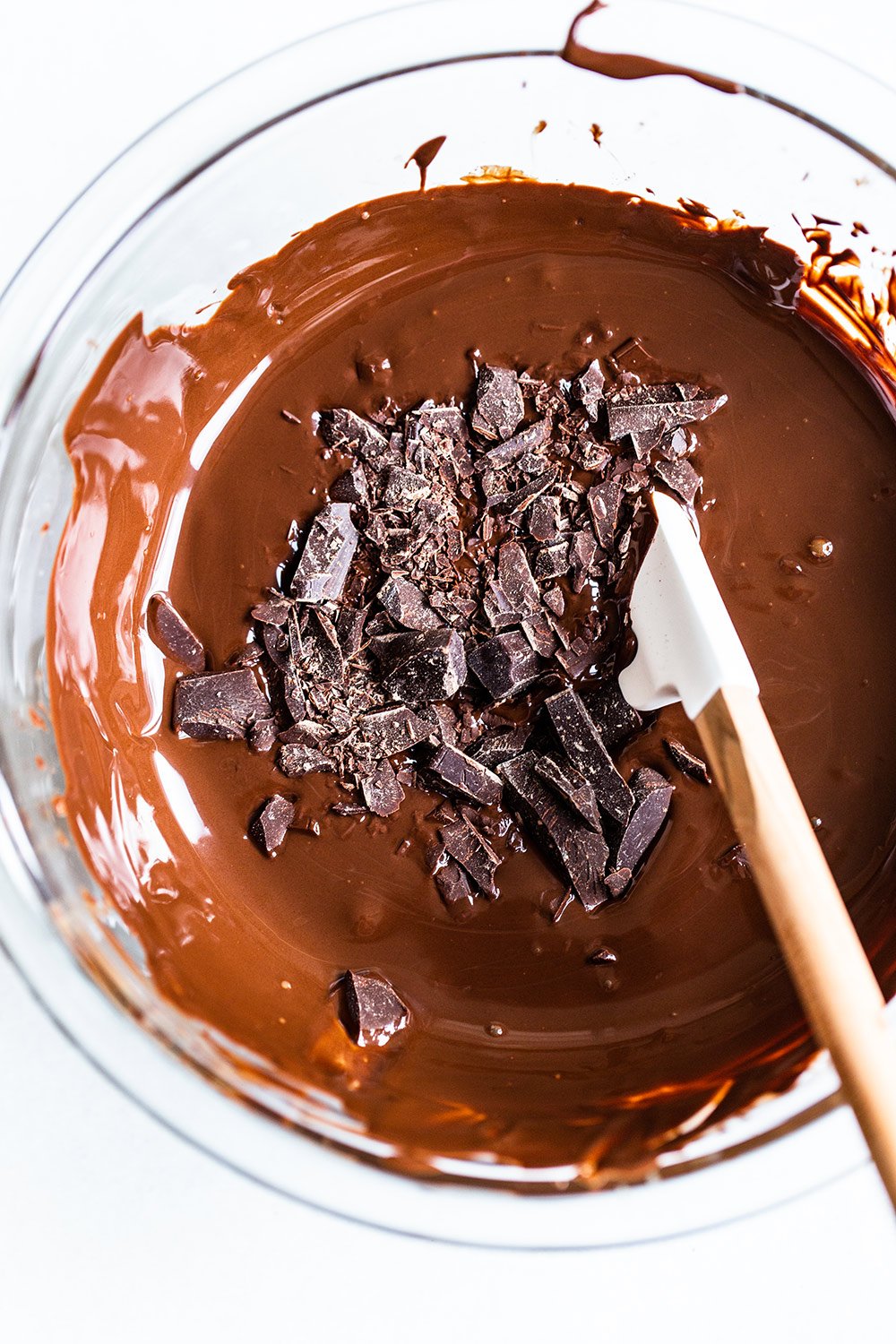

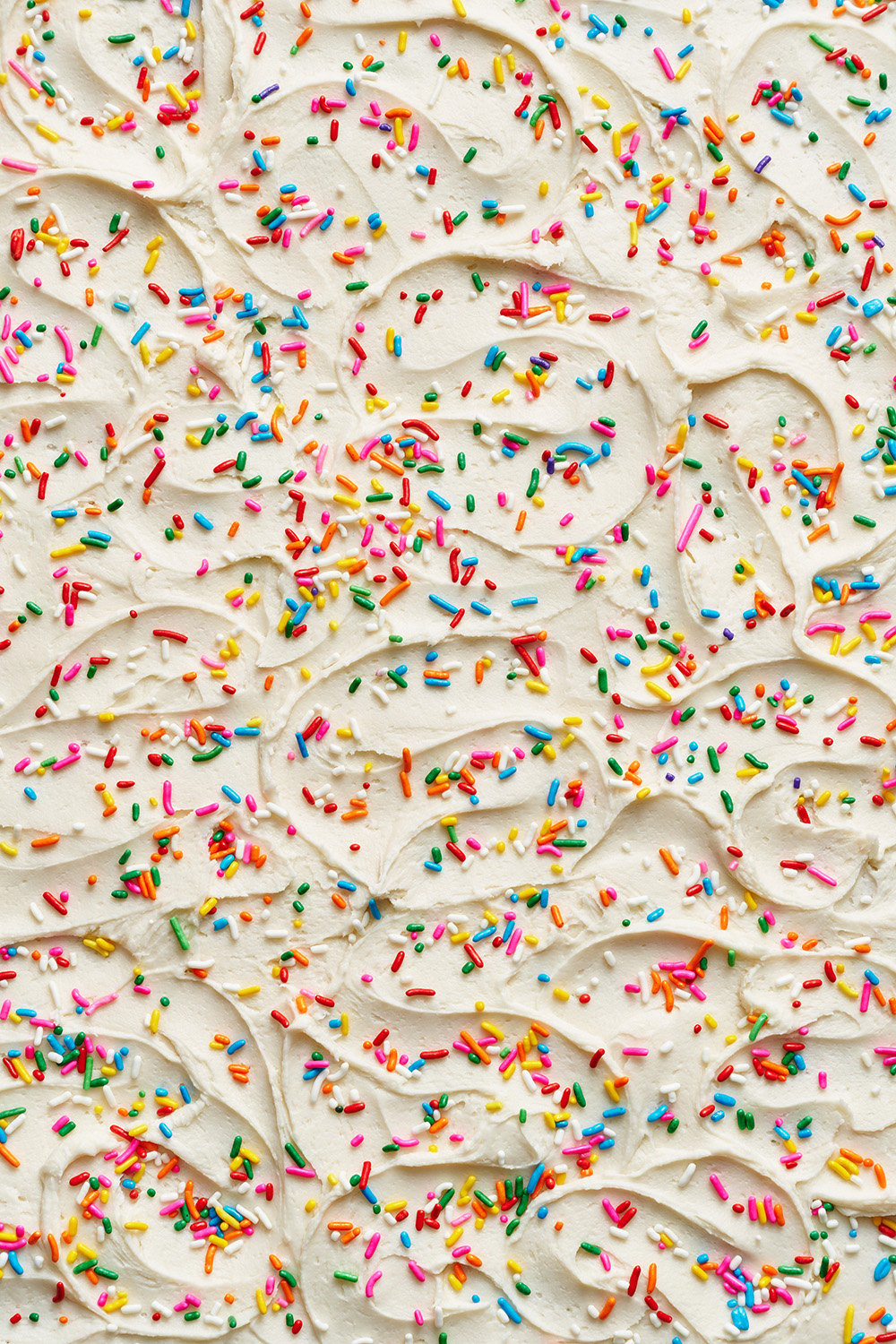



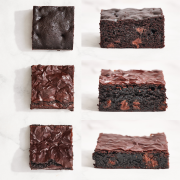
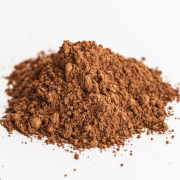
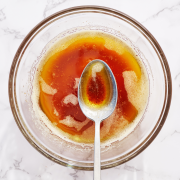

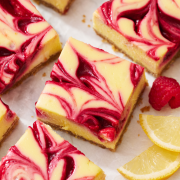
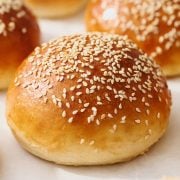
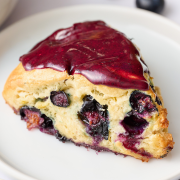








I don’t know why but I find the idea of tempering chocolate very intimidating. Thank you for the detailed instruction. If I buy “eating” chocolate bars and not “baking” chocolate bars, do I still need to temper? I like the waterford chocolate bars (good value) – do those need tempering if using it for chocolate bark?
Hi Corina! Lots of people find tempering chocolate to be intimidating, so don’t worry, you’re not alone – but with Tessa’s tips and instructions here, you’ll be a pro in no time! As for the chocolate itself, all “eating” chocolate differs in cocoa percentage, ingredients, etc, so it’s always safest and recommended to use specific baking chocolate. There are some really delicious, great quality brands available, such as Valrhona and Callebaut, but Ghirardelli is always a great choice too. Good luck and let us know how it goes 🙂
Hello, do you recommend using the 300g Lindt Dark Chocolate Bars?? Do they have any additives that wouldn’t allow the chocolate to temper? We don’t have ghirardeli bars where I live.
Hi Sarah! We haven’t used Lindt to temper but I believe that should work just fine! Let us know how it goes 🙂
Great instruction, but for some reason my chocolate came out dull when I dipped my strawberries. I used Giradelli 60% chocolate bar and also used a candy thermometer. I did drop the temp a little too much when I removed the double boiler from the heat, but then brought it back up as instructed. Where did I go wrong? I of course will attempt again! Thank you!
Hi Giselle! I’m sorry to hear that your chocolate became dull. This typically happens when the chocolate gets a little too hot, which can cause the cocoa solids to crystalize and the chocolate to therefore lose its shine. This can happen so quickly, unfortunately, especially if you’re tempering less than a pound of chocolate. I’m sure your chocolate-covered strawberries were still delicious and pretty, even if they weren’t as shiny as you’d hoped! I’m sure you’ll nail it next time 🙂
Hi! I’m going to attempt to temper chocolate. Question: if I don’t use all of tempered chocolate at once, can I cool and store it for later use and just melt it to use?
Thank you for your help!
Hi Mary! You can absolutely use the tempered chocolate again, but you will need to re-temper it to use it again next time. Enjoy your chocolate adventures! 🙂
Hi, I’m making peppermint patties and it recommends to freeze the peppermint filling circles and then dip them in the chocolate. If tempered chocolate doesn’t do well with moisture, I’m thinking that tempered chocolate can’t be used for this peppermint patties method. Any suggestions?
Hi Patti! As long as your filling pieces don’t have any condensation or obvious outer moisture to them, that should be fine – just note that the temperature of the chocolate will change drastically as you dip each frozen piece, so you will need to drop the temperature back down frequently as you dip all your pieces. Also keep in mind that if these peppermint patties need to be stored chilled or frozen, the chocolate may lose its shine in the fridge, and may bloom as it comes to room temperature upon serving. I have seen peppermint patty recipes using more of a homemade fondant center, so those can more easily be covered in tempered chocolate, as they don’t need to be frozen or even necessarily stored refrigerated. If you prefer, you could likely just use melted chocolate (non-tempered) to dip your patties, but of course, this won’t have a nice shine to it. Let us know how it goes if you give the tempered chocolate coating a try! 🙂
Hi, I tried the microwave version of tempering and it worked well, thank you. I was wandering how long tempered chocolate can be stored? And what’s the best way to store it?
Hi Tessa, nice tutorial on tempering. I’m using it as a link to a simple recipe for my readers. Best, Sally.
Thank you for this, Tessa! I’ve been so curious about tempering chocolate for years, I’m excited to try.
I’d like to use it to top Italian rainbow cookies. I usually top the full 12×8 cake with melted chocolate, cool, then cut into the small cookie-sized pieces. I usually run into a problem where the chocolate breaks with the knife, so the cookies don’t all have clean chocolate tops—many have cracks or little missing shards. Do you think tempering the chocolate would help, or perhaps make this harder given the “snappy” texture?
Maybe I’m better off cutting and then putting the chocolate on each individual piece?
Thanks!
Hi Becky! Tempering chocolate will help it look shiny and beautiful, with a lovely snap, but it won’t necessarily cut perfectly, as chocolate will always set solidly. I would recommend running your knife under very hot water, then carefully wiping it completely dry with a towel, before making each cut as you slice up your cake. Doing this in between each cut (and being careful not to drag the knife) will ensure clean cuts, and the hot knife should help your chocolate cut without shattering. It may not be perfect, but this should help! Alternatively, as you suggested, you could slice up the cake and then carefully decorate the tops with chocolate on each individual piece. Good luck and happy baking 🙂
Hi Tessa, you stated never to use chocolate chips because they have added ingredients, but I checked the ingredients on the bag of Ghirardelli Semi Sweet Chocolate Chips and its the same as their baking bars. So why can’t I use the chocolate chips if the ingredients are the same?
Thank you
Hi Walter! While ingredient lists may look the same and contain the same actual ingredients, there may be different amounts of each ingredient in different products. Chocolate chips may work, good quality baking bars are always going to give you the best, most consistent results when melting and tempering. I hope that helps! 🙂
Hi again Kiersten, I used the Ghirardelli Semi Sweet Chocolate Chips and it was almost unusable for dipping the peppermint patties I was making. It was just to thick to work with. Now, with that said I used Ghirardelli 60% Bitter Sweet Chocolate Chips to dip the turtle candies I made and it work beautifully, nice and fluid and stayed workable for a long time. Go figure, thank you. I’m off to the store to buy some Ghirardelli Semi Sweet Baking Bars.
Thank you
Hi Walter! How interesting! I’m sorry those melted chips just weren’t working out for you. I hope you had better luck with the baking bars!
If I have tempered the chocolate and made bars from it, could those bars be later melted and the chocolate used for dipping truffles, or making chocolate candies or bark? I’ll be traveling at Christmas, and would like to make the candies after I get to our son’s house, but don’t want to have to try the tempering there, as well, If I don’t have to do so.
Hi Susan! Unfortunately, it will need to be tempered again – maybe you could turn it into a family event and make truffles together? 🙂
That’s OK. I could get the chocolate shipped to our son’s house and just do everything there! We’ll be there several days before Christmas, so we’ll have time. The couverture chocolate doesn’t need tempering for ganache, so I won’t need to temper all of it anyway.
Does chocolate sweetened with stevia have any different requirements when tempering?
Hi Susan! So glad it sounds like it will all work out well! Unfortunately, no one on our team has experience working with chocolate sweetened with Stevia, so we can’t help you there, sorry! Best of luck 🙂
Thanks so much for this post. Very informative! maybe I completely missed it, but I do have one question… I made homemade dark chocolate – cacao butter, cacao and unrefined coconut sugar and vanilla. (I tried to copy ”Hu”’s ingredients because I love their chocolate and I wanted it to be healthier) after I’ve made the chocolate, do I need to let it harden and THEN do I have to temper it? Or is homemade chocolate already tempered?
Hi John! I’m sorry, but our team hasn’t had much experience with homemade chocolate! You can certainly experiment, but I don’t believe most (if any) should be used for tempering, as it’s not going to be as stable as chocolate produced in a commercial setting. If you give it a try, let us know how it goes 🙂
Hi John,
You do not have to let in harden, melted, all the crystals in the cacao butter is in an undefined stated (as with melted chocolate) – You can temper right away – any of the described processes give you Crystal type 5 (Snappy, Shiny Chocolate)
The far easiest way to temper chocolate is to seed with 1% MyCryo (Tempered powdered cocoa butter)
Recipe:
1. Melt Chocolate let it cool to 34 C (35C if Dark) – in any bowl use Microwave or other heat source.
2. Add 1% MyCryo of total weight of chocolate.
3. Chocolate is now tempered.
Do you need to add oil to this? Most sites say add oil, but I’d prefer not to if I can.
I’m assuming properly tempered chocolate does not need added oil…?
I’m making chocolate molds/candies for my daughters cake.
Thank you in advance
Hi Rebecca! No, Tessa’s methods do not require the addition of oil. You’re correct; it’s not needed if tempered properly! If you follow Tessa’s directions carefully, use a candy thermometer for accuracy, and use good-quality chocolate (not melted chocolate chips or candy melts), you should have great results! Good luck!! 🙂